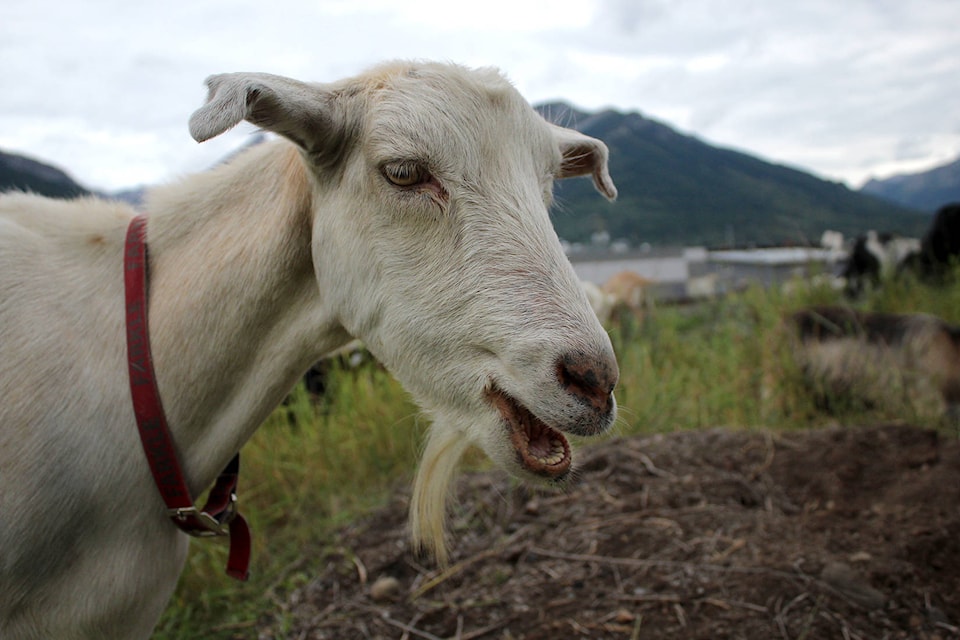As part of the City of Fernie’s Invasive Plant Management Plan, residents can expect to see a herd of 200 goats grazing on the grass in the Railyard Dog Park.
Used for the removal of noxious weeds as an alternative to herbicide, the goats will be in the park from July 23 until July 28. The dog park will stay open during this time, as the goats will be penned while consuming weeds, however the public is urged to respect signage while the animals work.
Overseeing the service is West Fork Resource Management Ltd. (WFRM), an organization focusing on invasive plant management. The goats are subcontracted from Vahanna Nature Rehabilitation, a Kimberley based company that provides vegetation control and target grazing through their herd of specialized goats.
According to Tracy Kaisner, owner of WFRM, goats are a facet of integrated pest management, alongside other mechanical, chemical, hand pulling and biocontrol methods. Strategies used depend upon land owner goals and site specific conditions.
“We have selected goats for the Railyard Dog Park area to help reduce the large and dense infestations of weeds,” said Kaisner. “Mowing is already used in some areas, herbicides and hand pulling may also be used in select locations of the park to support an integrated approach.”
Kaisner mentioned that goats may be beneficial over herbicides in sensitive areas where herbicide use is restricted, or in zones near bodies of water. They also help reduce dense foliage in locations that can later be treated with herbicide to offer more long term control.
“As goats strip the plant leaves, flowers and branches they reduce the plant’s ability to photosynthesize and put the plants into a state of emergency,” read a post on Vahanna’s website. “With a well designed grazing plan, the invasive plants are stressed and their competitive advantage is decreased even to the point of dying.”
According to Kaisner, the goats are brought in at a specific time in the weed’s life cycle to induce enough stress to keep them from reproducing. Target goat grazing is a long term solution when coupled with long term management, meaning sites could require annual grazing for multiple years in order to fully reap the benefits.
Identified as the East Kootenay Invasive Species Council area controller for the Elk Valley, WFRM was contracted by the city in 2013 to develop an invasive plant strategy. Following the results of a broad scale invasive plant survey in 2017, the WFRM updated the management plan in 2018. The strategy offers guidelines for city personnel and contractors involved with vegetation and pest management, as well as those planning, designing, or constructing landscapes, facilities and civic land. The plan’s predominant intention is to diminish the negative effects of invasive plants through the implementation of balanced management consistent with community values, environmental protection, and legislation.
WFRM has provided a number of invasive plant management services for the City of Fernie, including inventories, invasive plant control, suggestions for future management, and GIS data for tracking treated areas.
To learn more about the environmental, social, and economic impacts of invasive plant control, as well as what land owners in the East Kootenays can do to help, visit Ekisc.com. To read more about the City of Fernie’s Invasive Plant Management Plan, head to Fernie.ca.
reporter@thefreepress.ca
Like us on Facebook and follow us on Twitter
